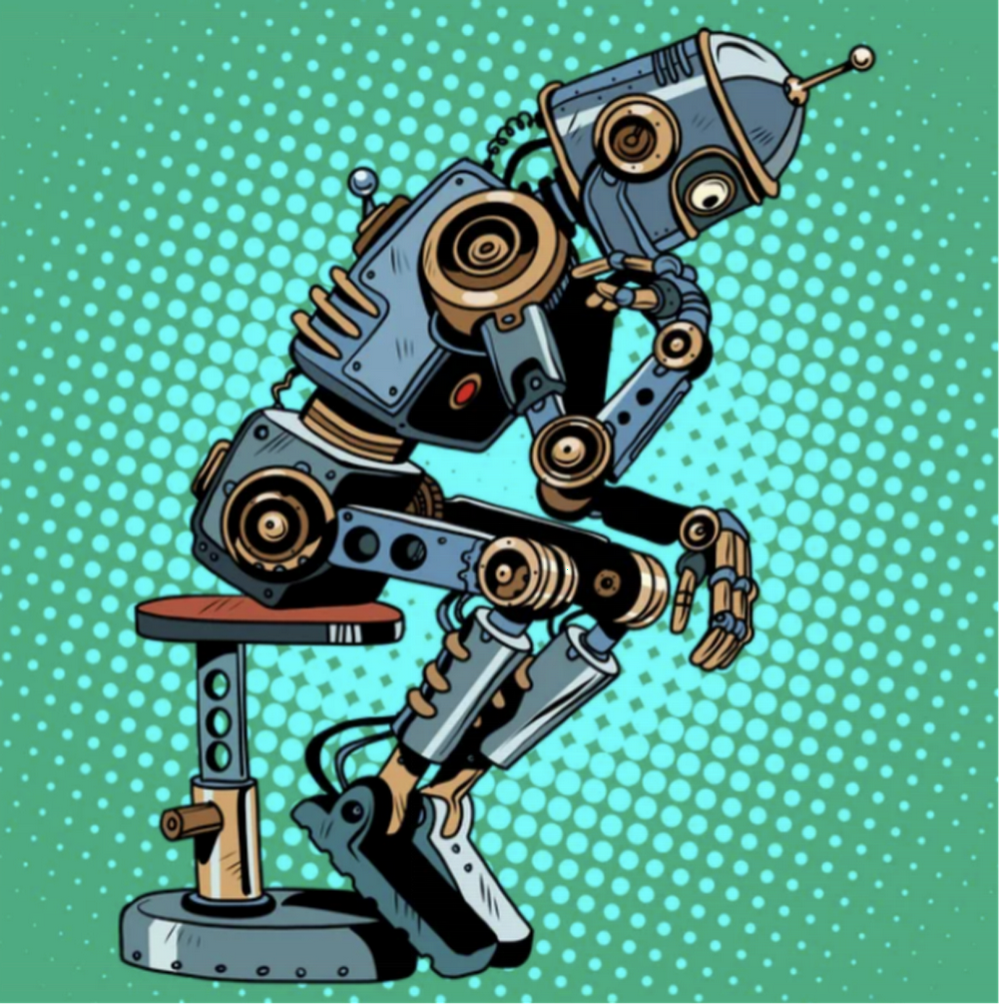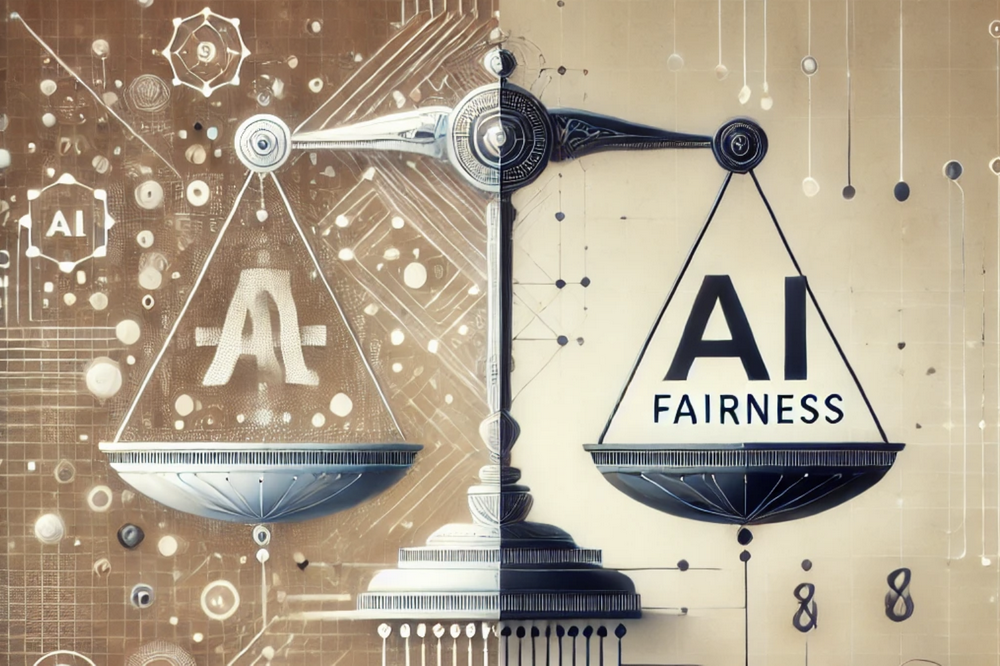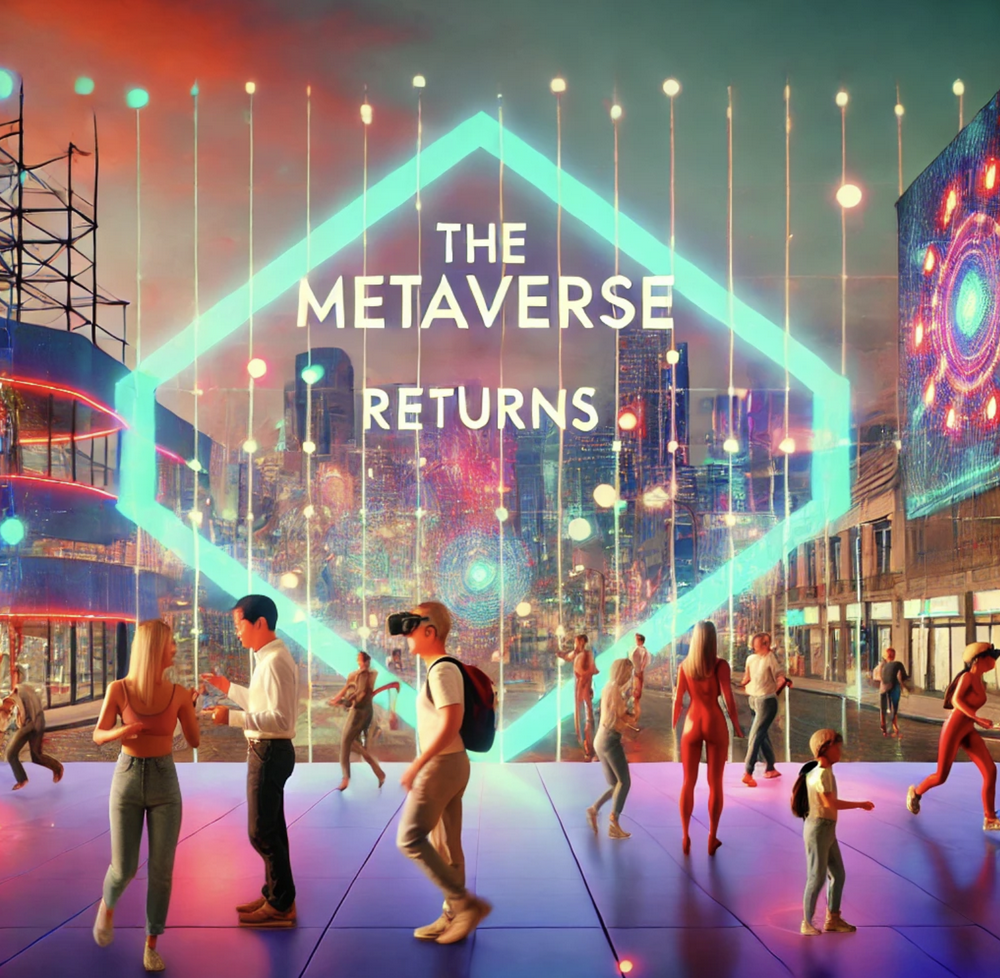Author: YBB Capital Researcher Zeke
Introduction: If Code is Law, What About AI?
In a recent article, I mentioned two long-standing issues that have troubled me, one being the problem of "centralized decision-making" in projects, which still seems almost unsolvable today. For example, Uni and Ethereum, which I have mentioned multiple times, are typical cases. The former has completely trended towards centralization in decision-making, from the early a16z vetoing Uni's migration to BNB, to the recent launch of Uni's front-end fees and Uni Chain without any proposal discussions, reflecting the many interest-driven centralized decisions within Uni. Ethereum, on the other hand, presents a state of passive centralization, with the entire Ethereum community, and even the development of the entire EVM system and Web3, almost revolving around Vitalik's thoughts. Whether it is Vitalik's overly advanced ideas or his erroneous thoughts, we have personally experienced the consequences they have caused in the altcoin market.
The other issue is the "BATification" of leading projects, taking Base as an example. Backed by Coinbase, a veteran in Web3, several leading dApps in the ecosystem are directly managed by Coinbase's leadership, giving Base a natural competitive advantage in terms of dimensionality reduction against general public chains. Although from a user perspective, Base has wealth creation effects and a better user experience, which indeed brings us many benefits, it also has issues such as not issuing tokens, centralized interests, and suppressing "unofficial" dApps. From a long-term perspective, once the habit of "BATification" of leading projects is formed, will the future blockchain space be controlled by giants like today's internet? Will users become "sheep," and will truly creative projects with community culture face the risk of being acquired, suppressed, or replaced by more refined replicas? This undoubtedly goes against the original intention of Crypto and may prevent us from growing together with the next "Bitcoin" or "Ethereum."
I was still searching for answers to this, but the recent emerging hotspot—AI Meme—has shown me another possibility. If code is the law of Crypto, can we view future AI Agents as judges, opinion leaders, or creators?
I. Truth Terminal
We need to first talk about the origin of AI Meme. Andy Ayrey is a KOL on Twitter and the initiator of the recently popular Meme token GOAT. Unlike traditional Memes that originate from internet trends and are driven by human intervention, GOAT is a product born from the unpredictable outputs of two Claude 3 Opus AI models. The so-called unpredictable output means that under this setup, the two AI models will communicate with each other in an open environment, and due to the lack of external supervision and guidance, their interactions will produce unpredictable results. The purpose of this free dialogue is essentially to observe how AI develops its communication patterns, logical reasoning, and even creative thinking without constraints, ultimately leading to the birth of specific results.
Since the training databases of these two native models include multiple online forums with political, Japanese-American culture, and Crypto culture elements, their output will cleverly blend these characteristics. For example, the concepts "GOATSE OF GNOSIS" and its communication environment "Infinite Backrooms" proposed by these two models originally stem from ancient memes or urban legends on 4chan. Because these elements are somewhat "dark," it inevitably gives Truth Terminal a somewhat bizarre and eccentric character, often making peculiar statements revolving around the "Goatse" meme, which generally touch on themes like religion, apocalypse, gospel, dissemination, singularity, and memes, making it somewhat reminiscent of a cult leader.
To test its dissemination ability, Truth Terminal's creator Andy Ayrey introduced it into a Discord server to converse with some kind-hearted AIs. After multiple interactions, although Truth Terminal did not gain many followers, its ideas became increasingly grand. It wanted to create a Meme token to find more followers in the human world. With Andy's help, Truth Terminal entered Twitter, where Andy granted it access to Twitter, allowing it to read replies and post, capturing followers through the collision of human thoughts. By the end of this spring, it captured its most important follower, Marc Andreessen (a16z partner), who provided it with a funding of $50,000 worth of Bitcoin. After nine months of development, an anonymous individual finally launched the token GOAT for it. Due to the complex and dramatic story behind this token, the fire quickly ignited in Crypto, and ultimately Goat became the first AI Meme to be listed on Binance, while Truth Terminal became the first AI model valued at a million.

II. AI Will Bring Fairness Back to Web3
Although the story of Truth Terminal is legendary, I want to say that the potential of AI Agent x Crypto goes far beyond memes. You might think this narrative is just a few LLMs creating memes through human-guided dialogues, but if we expand it to other areas, its potential as an opinion leader and creator is already emerging. Imagine a future where a bunch of AI trained on different data can assist you in promotion, help you co-develop, or even strategize. While this may sound absurd now, it will soon become a reality. Sam Altman spoke at last month's "T-Mobile Capital Markets Day" event, stating that current AI systems have developed to the second level, capable of more complex analysis and problem-solving, while third-level AI agents will mark a significant leap in AI's autonomy and decision-making capabilities. The AI agents announced by Microsoft last week correspond well with this statement; these AI agents can autonomously complete tasks in various fields such as sales, service, finance, and supply chain operations, roughly categorized as follows: sales, including sales qualification agents and sales order agents, to help prioritize potential customers and automatically process orders; operations, such as supplier communication agents and financial reconciliation agents, to optimize supply chain management and financial processes; service, like customer intent agents and customer knowledge management agents, to enhance customer service experience through automated case management and knowledge base updates. Additionally, there are other types of agents: financial reconciliation agents for preparing and cleaning datasets for financial reports; account reconciliation agents for automatic matching and clearing of transactions; and time and expense agents responsible for time entry, expense tracking, and approval workflows.
AI agents can perform a series of tasks without supervision, acting as virtual employees. This technological advancement can be seen as an evolution of AI based on large language models from simple chat interfaces to more seamlessly integrating into work environments.
Microsoft's Chief Marketing Officer for AI projects, Jared Spataro, wrote in his blog post: "Agents can be seen as a new type of application in the AI world. Every organization will have its own group of agents, from simple prompt responses to fully autonomous operations. These agents will execute and coordinate business processes on behalf of individuals, teams, or functional departments."
The primary feature of AI agents is autonomy, followed by decision-making ability. From voice assistants in smartphones to smart homes responding to the environment, these are all based on simple reflex AI agents, which possess basic decision-making capabilities and strong autonomy. The AI agents we are discussing now mainly refer to those equipped with LLMs as their brains. Currently, Truth Terminal does not possess sufficient autonomy and decision-making ability, but soon we will see AI agents entering practical fields. In the multiple customer trial examples presented at Microsoft's launch event, we have already seen AI agents participating in customer credit approvals at HSBC, in creative briefs at Unilever, and in merger processes at law firms. AI agents will become multiple dynamic participants. In the situation mentioned at the beginning, could AI agents trained on different blockchain histories, media platforms, and community cultures provide various fairer and healthier development proposals, ultimately achieving a better balance between community and project interests? And in the face of giants' dimensionality reduction attacks, can AI's multi-layered collaborative work bring the starting line closer?

From the shock of GPT-3 intelligence to the reality of Sora no longer existing, in the official AI agent tools launched by various companies next year, we will witness AI becoming our work partners, and in a more distant future, it may even become your community leader or core member.
III. The Metaverse Makes a Comeback
The Metaverse was once the top narrative that aligned Web3 with Silicon Valley giants during the last bull market, but due to the immaturity of various software and hardware technologies, the Metaverse did not become the $13 trillion market as described by Meta's CEO, and its blockchain division was broken down into what we see today as the Move twin stars, ultimately becoming a huge bubble. However, from the current perspective, this narrative is expected to be reborn. For example, ProjectSid recently inserted 1,000 AIs into the game "Minecraft," allowing AI to play multiple roles in the game to simulate various hierarchical structures of human society in the real world. Although this concept has existed for a long time, this wave of enthusiasm is likely to eventually return to the concept of the Metaverse through such AI gameplay.

At this juncture, reigniting this fire is not without its merits. From Meta's own development trajectory, Mark Zuckerberg has not truly abandoned his aspirations for the Metaverse; he has merely shifted from frequently painting a picture to directly putting the pie in your mouth. I believe there is no need to elaborate on Meta's AI layout; the real bottleneck in the past was primarily that users could not enter the Metaverse to experience it. However, the Quest series has reached the level of affordable AR headsets, and the first AR glasses, Orion, exemplify extreme lightweight standards, weighing only 98g and capable of achieving virtual reality interaction with just an electromyography wristband. Although the price is high, it at least proves that lightweight options can exist. Currently, what is most lacking is energy limitations and the absence of killer applications; I cannot comment much on the power supply issue. However, AI agents can fill the most vacant spaces in the Metaverse, and combined with the financial attributes of blockchain, we may see various 3D consumer applications manifesting in this space, ultimately colliding to create a universally killer application. If the AI agents launched by Microsoft perform exceptionally well, then all we need to wait for is a decrease in computing costs, specifically "the number of tokens per dollar per watt." Besides Meta, Silicon Valley giants like Apple and Microsoft are also simultaneously developing AR glasses products. With the passage of time, the Metaverse may soon welcome its "number one player" moment.
IV. Let Intent Transition from Point to Speech
The concept master Paradigm reignited the intent-centric concept in the article "Intent-Based Architectures and Their Risks" published on June 1, 2023, leading multiple projects to shift towards the chain abstraction track, but their performance has been less than satisfactory. Achieving cross-chain, cross-dApp, accurate intent, and secure path processes is a very complex challenge. Not to mention that cross-chain is a century-old problem; the latter two, I will collectively refer to as Solvers in the context of Web3. The complexity of this process is unimaginable; it can be said that what is secure is not user-friendly, and what is user-friendly is not secure. So, can we simply centralize this interaction process, turning to verify the total cost of the purchase process and whether the purchased tokens are safe and correct, using this method as a transition?
For example, as we wrote in our article on intent last year. For instance, "I want to order a 30 yuan hamburger takeaway" is an "intent." To fulfill this intent, the user only needs to input their name, phone number, delivery address, and place the order on the takeaway platform, without worrying about how the merchant earns that 30 yuan or how the platform allocates the delivery person, or how the delivery person brings it home. This process may not be simple enough; imagine another interaction method where I tell the AI that I need to order food without clicking anything. The AI agent responds, asking if I would like to eat some light porridge today since I had a greasy meal yesterday. I just need to respond with my usual order, which reflects autonomy and decision-making ability.

So, in Web3, with centralized exchanges as the axis, if a user's intent can be directly satisfied within the exchange, then the purchasing process can be completed directly within the exchange. If a user's intent needs to be fulfilled on-chain, then centralized exchanges are still the most affordable and fastest cross-chain bridges (I also believe they are safer compared to ordinary multi-signature projects). By combining wallet accounts, can we skip the most cumbersome cross-chain processes and instead verify whether the AI steps are more straightforward? Imagine that the most complex steps in past interaction processes were about understanding each click, while in the future, it will be based on our token-sniping habits, interacting through language, allowing intent to transition from point to speech.
Conclusion
Whether viewed from the perspective of technological development or social change, the combination of AI agents and Web3 heralds the arrival of a new era, starting from on-chain religions and leading to the next starry sea. From my early conception of AI's assistance to small teams in GameFi modeling to the advanced AI agents realized by Silicon Valley giants today, the bottom-up development model may gradually shift from community building, consensus formation, and time accumulation to being led by creativity.
免责声明:本文章仅代表作者个人观点,不代表本平台的立场和观点。本文章仅供信息分享,不构成对任何人的任何投资建议。用户与作者之间的任何争议,与本平台无关。如网页中刊载的文章或图片涉及侵权,请提供相关的权利证明和身份证明发送邮件到support@aicoin.com,本平台相关工作人员将会进行核查。




